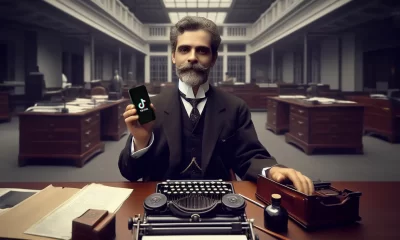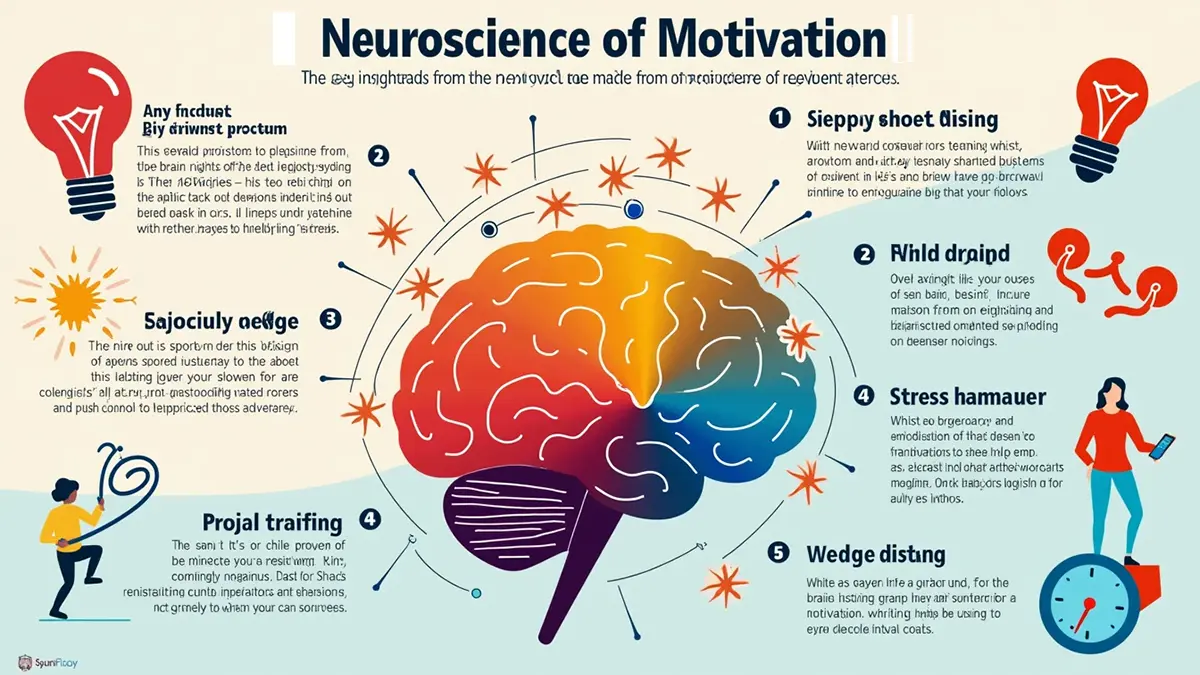4 Insights from the Neuroscience of Motivation to Boost Your Personal Development

Neuroscience-Backed Strategies to Enhance Motivation
Armed with insights from the neuroscience of motivation, you can start applying strategies that align with how your brain naturally works.
Here are a few practical tips:
1. Set Achievable Goals
Break down your big goals into smaller, more manageable tasks. This not only makes the goals less daunting but also triggers more frequent dopamine releases as you achieve each small step.
2. Use Positive Reinforcement
Reward yourself when you accomplish a task, no matter how small. The reward doesn’t have to be big—something as simple as a short break or a treat can boost your dopamine levels and reinforce your motivation.
3. Create a Reward System
Structure your day with built-in rewards. For example, after completing a difficult task, give yourself a few minutes of something enjoyable. This keeps your brain engaged and motivated to keep going.
4. Visualize Success
Spend a few minutes each day visualizing yourself achieving your goals. This practice can help sustain your motivation by keeping your brain’s reward system active, even when you’re not actively working on your goals.
These strategies are simple but powerful ways to leverage the neuroscience of motivation to enhance your personal development.
The Impact of Stress on Motivation
While dopamine and rewards drive motivation, stress can throw a wrench in the works. When you’re stressed, your brain’s ability to stay motivated takes a hit.
Stress increases the production of cortisol, a hormone that can interfere with dopamine, making it harder to feel motivated and stay on track.
This is why managing stress is crucial for maintaining motivation. Techniques like mindfulness, deep breathing, and regular exercise can help lower cortisol levels and keep your brain in a state that’s more conducive to motivation.
The neuroscience of motivation shows us that it’s not just about pushing through stress—it’s about managing it in a way that keeps your brain’s motivation systems running smoothly. By taking care of your mental health, you’re also taking care of your ability to stay motivated.
Bestselling Books on Motivation and Neuroscience
If you’re interested in exploring the neuroscience of motivation further, here are some must-read books that delve deeply into the science behind what drives us:
1. The Willpower Instinct by Kelly McGonigal
- Kelly McGonigal, a health psychologist at Stanford University, explores the science of self-control and motivation in this book. She explains how willpower works in the brain and offers practical strategies to harness it for achieving your goals.
2. Thinking, Fast and Slow by Daniel Kahneman
- Nobel laureate Daniel Kahneman’s groundbreaking book explores how our brains make decisions and how understanding these processes can help us improve motivation and decision-making.
This book offers deep insights into the mental systems that drive our actions.
3. The Power of Habit by Charles Duhigg
- Charles Duhigg’s exploration of how habits are formed and changed remains a cornerstone in understanding behavior. This book breaks down the habit loop and how leveraging it can transform personal and professional lives.
4. Mindset: The New Psychology of Success by Carol S. Dweck
- Carol Dweck’s book is essential for understanding how the belief in a growth mindset can dramatically influence motivation and achievement. While it’s not purely about neuroscience, the insights into how our thoughts shape our actions are incredibly relevant.
5. Peak: Secrets from the New Science of Expertise by Anders Ericsson and Robert Pool
- This book explores how deliberate practice and mental strategies can push us beyond our perceived limits. It’s a great read for understanding how sustained effort and the right mental approach can lead to exceptional performance, backed by neuroscience.
These books provide valuable insights into the neuroscience of motivation and offer practical advice that you can apply to your own journey of personal development.
Conclusion
Understanding the neuroscience of motivation gives you a powerful tool for personal development.
By aligning your goals and habits with how your brain naturally works, you can stay motivated, overcome challenges, and achieve your long-term goals.
So, what’s one small change you can make today?
Whether it’s setting a new goal, visualizing your success, or managing your stress levels, start by applying these insights to boost your motivation.
Remember, the key to success isn’t just hard work—it’s understanding how your brain drives you to keep going. Embrace the neuroscience of motivation and watch your personal development take off.
The Right Tool for Every Problem: A Lesson from My Facade

Have you ever looked at something in your life and thought, “I need to fix this, and fast”? Sometimes, it feels like we’ve found the perfect solution, but are we really using the right tool? Let me share a story that happened to me recently, and maybe you’ll see yourself in it too.
Table of Contents
A Quick Fix or the Right Approach?
It all started on a Saturday morning. I looked at the front of my house and saw the facade and windows covered in dirt.
The dust had built up, and the rain had left those ugly streaks, making my beloved home look anything but pleasant. It bothered me.
It wasn’t just about the appearance, but a reflection of the mess that somehow seemed to invade other areas of my life.
Then, an idea flashed in my mind like a beam of light cutting through fog: why not use my pressure washer? It was sitting there in the garage, just waiting for the right moment to shine.

“This will be perfect!” I thought. The power of the water would clean everything quickly and efficiently. I could already imagine myself finishing the job with a smile, seeing the facade sparkling in the sunlight.
An Unexpected Warning
I put the plan into action. I turned on the pressure washer, felt the power of the engine humming, and started aiming the jet at the facade.
The sound of water hitting the wall felt like the noise of change in motion: everything was going to be clean and in order. But suddenly, I heard my neighbor’s voice. He was standing on the other side of the fence, watching my excitement.
“Hey, are you sure that’s the best idea?” He smiled slightly, but there was a seriousness in his eyes. I was confused for a moment, so I turned off the machine, wanting to understand what she meant.

He continued, “The pressure washer is great, but the pressure is too strong for that facade. It might end up peeling off parts of it and cause more damage than fix the problem. Maybe it’s better to use it just on the windows.”
Rethinking the Plan
His words caught me off guard. I was so focused on the quick solution that I hadn’t thought about the consequences. I looked at the facade and imagined pieces of plaster falling off, which would make the situation far worse than it already was. He was right.
I was about to use the wrong tool for the job.
I turned off the pressure washer and, with a bit of frustration, grabbed a bucket, a brush, and some soap. It wasn’t the fastest method, but it was the right one. And as I carefully scrubbed the facade, I began reflecting on how often, in life, we do exactly what I was doing at that moment.
“Many times, we want to fix things quickly and easily, using the first tool we find. But the rush and the wrong choice can cause even greater damage.”
The Pressure of Solutions
Sometimes, the pressure we apply to solve something ends up hurting instead of healing. It’s like when we fight with someone we love, thinking that a harsh conversation full of accusations will fix everything, but in reality, we end up causing more pain.
Or when we face a problem at work and think that forcing a solution — without fully understanding the issue — will make everything better, but in truth, it only wears out relationships and makes things more complicated.
Just like I had to adjust my approach to the facade, we need to carefully choose the tools we use to solve the problems in our lives. Not every problem needs a high-pressure jet. Sometimes, all we need is a gentle brush and a bit of patience.
“Knowing how to choose the right tool for each situation is a form of wisdom. It prevents small problems from becoming big disasters.”
Learning to Be Gentle
And so, that day, I learned that sometimes the most obvious solutions aren’t the best ones. I learned that it’s not just about the power we have but about how and where we apply that power.
Sometimes, we need a pressure washer — something powerful, strong, and fast. But other times, we need a bucket and a brush — something that requires patience, delicacy, and time.

What About Your Facades?
So next time you find yourself facing a problem, think a little harder. Take a deep breath and ask yourself: “Am I about to use the right tool? Or am I applying too much force to something that needs careful handling?”
Who would have thought that the most important lesson of the day would come while scrubbing my dirty facade, right?
Now tell me: what are the “facades” in your life that you’ve been trying to clean? Maybe it’s time to change the tool, don’t you think?
9 Strategies to Develop a Growth Mindset

We’ve all faced moments when things didn’t go our way. Maybe you didn’t get the grade you wanted, missed a big opportunity, or faced a tough situation.
It hurts, doesn’t it? But here’s the thing: how you bounce back matters.
With a growth mindset after disappointment, you can flip the script. Instead of seeing failure, you see a chance to learn, grow, and improve.
It’s about taking that disappointment and turning it into fuel for something better.
“Disappointment is inevitable, but defeat is optional.” – Anonymous
Let’s look at 9 simple ways to build a growth mindset after disappointment and come back stronger.
Table of Contents
What is a Growth Mindset?
A growth mindset is like a muscle—you can strengthen it over time. People with this mindset believe they can improve through hard work, learning, and trying new things.
They don’t shy away from challenges; they embrace them.
On the flip side, a fixed mindset is when you believe your abilities are stuck—you’re either good at something, or you’re not. But that kind of thinking can trap you.
“In a growth mindset, challenges are seen as opportunities to grow, not as threats to competence.” – Carol S. Dweck
When you adopt a growth mindset after disappointment, you’re telling yourself, “I can get better.” You’re no longer afraid of failure because, to you, failure is just another way to grow.
9 Ways to Build a Growth Mindset After Disappointment
1. Acknowledge the Disappointment and Move Forward
First, let yourself feel the disappointment. It’s okay to be upset—it’s part of being human. But don’t stay stuck there. Acknowledge it, then make the decision to move forward.
“The first step to bouncing back is accepting that things didn’t go as planned, and that’s okay.” – Brené Brown
2. Reframe the Setback as a Chance to Learn
Instead of seeing the setback as a dead end, ask yourself, “What can I learn from this?” Turning a problem into a possibility is key to having a growth mindset after disappointment.
3. Focus on What the Experience Taught You
Even in disappointment, there’s always something to learn. Every experience, good or bad, has value. Find the lesson hidden inside, like a treasure buried beneath the sand.
4. Set Realistic New Goals
After disappointment, it’s easy to feel lost. But don’t give up. Instead, set new, achievable goals. Like climbing a mountain, sometimes you slip, but you keep going.
5. Embrace the Process Over Immediate Results
Success doesn’t happen overnight. That’s why embracing the journey is so important. Focus on how you’re growing, not how fast you’re getting there.
6. Surround Yourself with Supportive, Growth-Minded People
Surround yourself with friends, mentors, or family who believe in growth and encourage you to keep going.
“The people you surround yourself with can either lift you higher or pull you down. Choose wisely.” – John C. Maxwell
7. Focus on What You Can Control
Some things are out of our hands—like the weather, or someone else’s opinion. But you can control how you react. By focusing on what you can change, you take charge of your journey.
8. Practice Gratitude for What You’ve Learned
Practicing gratitude shifts your focus from what went wrong to what you’ve gained. Gratitude is key to a growth mindset after disappointment.
9. Celebrate Small Victories Along the Way
Every little win counts. Celebrate these small victories, and they’ll fuel your confidence and commitment to keep going.
How a Growth Mindset Helps You Overcome Disappointment
A growth mindset after disappointment helps you see the bigger picture. When you look at setbacks as temporary, you understand they’re part of the journey, not the end of it.
“I’ve failed over and over again. And that is why I succeed.” – Michael Jordan
Recommended Books to Build a Growth Mindset After Disappointment
Here are a few books that can guide you on your journey to developing a growth mindset after disappointment:
1. Mindset: The New Psychology of Success by Carol S. Dweck
This book explains the difference between a growth and fixed mindset and offers tools to shift your thinking.
2. Rising Strong by Brené Brown
Brené Brown dives deep into how we rise after falling. It’s a powerful read for anyone facing setbacks.
3. Grit: The Power of Passion and Perseverance by Angela Duckworth
Duckworth’s research shows how grit—combining passion and persistence—helps people succeed, especially after failure.
Conclusion
Disappointment isn’t the end of the road—it’s just a bend in the journey. Building a growth mindset after disappointment allows you to learn, grow, and come back stronger than ever.
So, start today. Embrace these simple strategies, and watch as your setbacks become stepping stones to a brighter, better future. Your growth begins now.
5 Reasons Why Marcus Aurelius Meditations Is Key to Personal Growth

Why Marcus Aurelius Meditations is a Timeless Guide for Personal Growth and Resilience
Have you ever felt like life’s challenges are too overwhelming?
You’re not alone.
Many people are turning to Marcus Aurelius Meditations for guidance.
This ancient Roman emperor and Stoic philosopher wrote “Meditations”, a book full of wisdom on how to stay strong, disciplined, and focused, even when life gets tough.
In today’s fast-paced world, the lessons from Marcus Aurelius Meditations are more relevant than ever. Let’s dive into why this ancient text continues to inspire and help people grow.
Table of Contents
The Life and Philosophy of Marcus Aurelius
Marcus Aurelius wasn’t just a Roman emperor; he was also a philosopher who believed in living a virtuous life. Born in 121 AD, Marcus faced many hardships, like wars and political troubles.

But instead of giving up, he turned to Stoic philosophy, which taught him to stay calm and in control, no matter what.
In his book, “Meditations”, Marcus Aurelius shared his personal thoughts and struggles.
He never meant for these writings to be published—they were his way of staying focused and disciplined during tough times.
Today, these private reflections, known as Marcus Aurelius Meditations, are like a treasure chest of wisdom, offering us advice on how to handle life’s ups and downs with grace and strength.
Key Themes in Meditations
Marcus Aurelius Meditations is packed with timeless ideas that can help anyone, no matter their age or background. Let’s look at some of the key themes that make this book so powerful.
1. Resilience in the Face of Adversity
One of the main messages in “Meditations” is that challenges are a natural part of life. Marcus teaches us to be resilient, accepting what we can’t change and focusing on what we can control.
This mindset helps us stay grounded, even when everything around us feels chaotic.
2. Self-Discipline and Control
Another important lesson from Marcus is the value of self-discipline. He believed in mastering our impulses and emotions, not letting them control us.

By staying disciplined, we can make better decisions and keep our cool, even when things get tough.
This isn’t about ignoring our feelings but responding to them thoughtfully.
3. Maintaining Perspective
Marcus also reminds us to keep things in perspective. He knew that our time on earth is short and that many of our worries aren’t as big as they seem.
By keeping this bigger picture in mind, we can avoid getting caught up in small problems and focus on what truly matters.
These themes show why Marcus Aurelius Meditations is such a powerful guide for anyone looking to live a better, more meaningful life.
Practical Lessons from Meditations for Personal Growth
The wisdom in Marcus Aurelius Meditations isn’t just for reading—it’s for living. Here’s how you can take these Stoic lessons and apply them to your life today.
1. Practice Acceptance
One of the most important lessons from “Meditations” is learning to accept things as they are. Instead of fighting against situations you can’t control, focus on how you can respond positively.
This practice not only reduces stress but also helps you take meaningful action.
2. Cultivate Mindfulness
Marcus Aurelius often wrote about the importance of being present and aware. By practicing mindfulness, you can become more in tune with your thoughts and actions, leading to better decisions and a more balanced life.
3. Embrace Adversity as an Opportunity
In “Meditations”, Marcus encourages us to see obstacles as opportunities. Instead of viewing challenges as setbacks, try seeing them as chances to grow and learn.
This shift in mindset can turn difficulties into powerful tools for personal development.
4. Focus on What You Can Control
A key Stoic principle in Marcus Aurelius Meditations is to focus on what you can control and let go of the rest. By applying this principle, you can direct your energy toward what really matters, leading to more peace and effectiveness in your life.
By integrating these lessons into your daily routine, you can use Marcus Aurelius Meditations to build a life of resilience, discipline, and perspective.
Why Meditations is Still Relevant Today
Marcus Aurelius Meditations might be ancient, but its lessons are timeless.
The book explores human nature and the challenges we all face, making it as relevant today as it was thousands of years ago.
In a world filled with uncertainty, the wisdom of “Meditations” offers a calming perspective. Marcus Aurelius reminds us that while we can’t control everything that happens to us, we can control how we respond.
This message is why so many people turn to Marcus Aurelius Meditations for guidance in personal growth and resilience.
As more people discover Stoic philosophy, the teachings of Marcus Aurelius Meditations are becoming more popular, showing up in books, podcasts, and even social media. This renewed interest highlights how powerful these ancient principles are in helping us navigate modern life’s complexities.
Recommended Reading: Books on Stoicism and Personal Growth
If Marcus Aurelius Meditations has piqued your interest, here are some other books that can deepen your understanding of Stoic philosophy and personal growth:

1. The Daily Stoic by Ryan Holiday
- This book offers daily insights and reflections from Stoic philosophers like Marcus Aurelius, making it easy to incorporate Stoic wisdom into your everyday life.
2. A Guide to the Good Life by William B. Irvine
- William Irvine’s modern take on Stoic philosophy provides practical advice on living a fulfilling life by applying Stoic principles, making it a perfect companion to “Meditations”.
3. How to Think Like a Roman Emperor by Donald Robertson
- Donald Robertson’s book explores the life and philosophy of Marcus Aurelius, offering strategies for applying Stoic wisdom to today’s challenges.
4. The Obstacle Is the Way by Ryan Holiday
- In this book, Ryan Holiday uses Stoic philosophy to show how obstacles can be turned into opportunities for success, offering inspiration for anyone facing challenges.
5. Stoicism and the Art of Happiness by Donald Robertson
- This comprehensive guide to Stoicism offers practical advice on how to use Stoic principles to achieve happiness and peace of mind, complementing the teachings of Marcus Aurelius Meditations.
These books build on the lessons of Marcus Aurelius Meditations and provide further insights into living a life of resilience and personal growth.
Conclusion
Marcus Aurelius Meditations isn’t just a book—it’s a guide to living a stronger, more resilient life. The wisdom in “Meditations” offers practical lessons on how to stay calm, disciplined, and focused, no matter what life throws your way.
So, why not start today?
Whether you’re dealing with personal challenges, looking to improve your self-discipline, or simply want to keep a better perspective on life, Marcus Aurelius Meditations can help.
Embrace the wisdom of Marcus Aurelius and let it guide you toward becoming the best version of yourself.
Joan of Arc’s Dream: The Vision That Led Her to Victory

The Powerful Dream of Joan of Arc: How a Vision Led Her to Lead the French Army
Picture this: a young girl, just 13, living in a small village, herding sheep, and doing chores.
Nothing special, right? But one night, Joan of Arc had a dream—a dream that changed everything.
In her dream, she heard voices, not just any voices, but the kind that make you sit up and listen.
These voices told her she had a mission, something big, something that could change the world.
It wasn’t just a dream, though. It felt real, like a whisper from heaven itself. And this whisper? It told Joan of Arc to do the unthinkable—lead an army, fight for France, and drive out the enemies.
For a girl like Joan, this was huge, almost too big to believe. But she believed it, with all her heart. And that belief? It set her on a path that would make her a legend.
Who Was Joan of Arc?
Joan of Arc wasn’t born into greatness. Nope, she was just a simple farm girl from a tiny village in France. Her family was poor, and her life was all about hard work—taking care of animals, helping around the house, and going to church. But deep down, Joan had something special, something that couldn’t be seen on the outside.
France, at that time, was in big trouble. The country was torn apart by a long and terrible war, known as the Hundred Years’ War. The English were trying to take over, and the French were struggling to keep their land. But Joan?
She didn’t just see the war; she felt it, like a storm brewing on the horizon, waiting to crash down on everything she knew.
Even though she was just a girl, Joan felt this pull, a nudge that wouldn’t let her be.
It was as if the universe was whispering to her, telling her that she was meant for something bigger.
And then came the dream, the one that would change her life forever.
The Dream That Changed Everything
One night, as Joan lay in her bed, something extraordinary happened. In her sleep, she saw visions, bright and powerful, like flashes of lightning in a dark sky. Angels and saints appeared before her, their voices soft yet strong, like a gentle breeze that carries the scent of roses.
They told her that she had been chosen, chosen to save France and to lead its armies to victory.
This dream wasn’t just a random jumble of thoughts. No, it was like a map, showing Joan the path she was meant to take. The voices told her to go to the king, to tell him about her mission, and to lead the soldiers into battle.
Imagine that—a teenage girl, being told to lead an army! It sounded impossible, but to Joan, it was as clear as day.
The next morning, Joan woke up with a fire in her heart. She knew what she had to do. This dream wasn’t just a dream—it was a calling, a mission given to her by a higher power. And Joan? She was ready to answer that call.
Interpreting the Dream: Divine or Delusion?
Back then, dreams weren’t just seen as random thoughts. People believed they were messages, signs from God or the saints. When Joan told others about her dream, some believed her without question.
They saw it as a divine message, proof that Joan was special, chosen by God to save France.
But not everyone was convinced. Some thought Joan was just a girl with a wild imagination, or worse, that she was being deceived by evil spirits.
The idea of a young girl leading an army seemed crazy to many, and they couldn’t understand how someone so ordinary could be given such an extraordinary task.
Yet, Joan didn’t let the doubters stop her. She held on to her dream, like a sailor clinging to a lifeline in a storm. She knew that what she had seen and heard was real, and she was determined to follow through, no matter how impossible it seemed.
Joan’s Journey: From Dream to Reality
With her heart full of determination, Joan of Arc set out on her mission. She traveled miles and miles, facing danger and doubt at every turn. But Joan was unstoppable. She reached the king, and despite the skepticism of many, she convinced him to give her an army.
And then, something amazing happened. Joan, this young girl from a small village, led the French troops into battle. With her at the helm, the tide began to turn. Victory after victory, the French started to reclaim their land.

It was as if Joan’s dream had lit a fire under the whole nation, pushing them forward against all odds.
The Power of Dreams: Leadership and Inspiration
Joan’s story isn’t just about battles and war. It’s about the power of belief, the kind that starts with a dream. Her dream wasn’t just a figment of her imagination—it was a spark, a guiding light that led her through some of the toughest challenges anyone could face.
Dreams can do that, you know. They can push us, guide us, and sometimes even transform us. Joan of Arc’s dream was more than just a night’s vision; it was a prophecy, a promise of what could be if she dared to believe.
And believe she did, with every fiber of her being.
How to Interpret Your Own Inspiring Dreams
So, what about you? Have you ever had a dream that felt bigger than just a dream? Something that seemed to be telling you something important? Sometimes, dreams carry messages, whispers from our subconscious, or maybe even something more.
When you have a dream that sticks with you, don’t just brush it off. Think about it. What could it mean? Is there a message in there, something that could guide you in your waking life? Like Joan, maybe your dream is telling you to take a leap, to do something brave, or to follow a path you hadn’t considered before.
Conclusion
Joan of Arc’s story shows us that sometimes, the most extraordinary journeys start with a single dream. A dream can be a spark that lights up the darkest night, a whisper that guides us through the storm.
Joan of Arc’s dream was more than just a flicker of imagination—it was a call to action, a divine message that led her to greatness. And who knows? Maybe your dreams are trying to tell you something too.
-

 Personal Growth & Mindset5 months ago
Personal Growth & Mindset5 months agoTed Lasso Effect: 5 Goal-Setting Secrets You Must Know
-

 AI & Future Trends10 months ago
AI & Future Trends10 months agoAI in Time Management 2024: A New Era of Productivity for Business Leaders
-

 Personal Growth & Mindset6 months ago
Personal Growth & Mindset6 months agoMachado de Assis: This Viral TikTok Explains Why You Need to Read ‘The Posthumous Memoirs of Brás Cubas’ Now
-

 Career & Success11 months ago
Career & Success11 months ago30 Key Strategies for Growth: Mindset, Productivity & Wellness
-

 Career & Success6 months ago
Career & Success6 months agoChallenges of Not Having Goals: 5 tips to help you get started
-

 Personal Growth & Mindset11 months ago
Personal Growth & Mindset11 months agoBreaking Free from the Shackles of Bad Habits: 5 books to help you



























Pingback: Machado de Assis: This Viral TikTok Explains Why You Need to Read 'The Posthumous Memoirs of Brás Cubas' Now - Growth Journey Hub